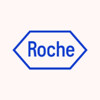
Endovenous Versus Liposomal Iron in CKD
Iron Deficiency AnemiaChronic Kidney DiseaseAnemia is a common complication in patients with chronic kidney disease (CKD). In addition to erythropoietin deficiency, many studies have identified iron deficiency as a cause of anemia in CKD patients. Most patients with CKD are iron deficient because of: inadequate intake and absorption, gastroenteric bleeding, urinary iron loss in patient with significant proteinuria. The iron treatment is pivotal to manage anemic patients with CKD: the prescription of iron is usually oral because of practicality and safety, but often it is inevitable to administer intravenous iron because of gastroenteric malabsorption, intolerance to oral administration, irregular intake. There're few randomized controlled studies about the efficacy of oral iron versus intravenous iron in patients not on dialysis; most of them demonstrate superiority of intravenous therapy to restore iron deficiency and hemoglobin levels. A particular formulation of iron, liposomal iron has a high gastroenteric absorption and high bioavailability with lower incidence of side effects. The investigators study aims to evaluate the efficacy of treatment with liposomal oral iron compared to intravenous iron in CKD anemic patients not on dialysis in the presence of iron deficiency.

Efficacy of the 6-point Diet
Chronic Kidney DiseaseThe dietary restriction of proteins and sodium is a cornerstone in the treatment of chronic kidney disease (CKD) and of its metabolic consequences. Dietary adjustments in CKD are complex and the patients' compliance is very low. A dietary interview method is a validated instrument to evaluate the patients' compliance; however, it the presence of a dedicated dietitians. For these reasons, and because of the absence of dedicated dietitians in many nephrology centres, it is usual practice to give standard low protein diets to CKD patients not on dialysis. Aim of this study was to verify if few simple tips were able to reduce protein, phosphate and sodium intake in patients with CKD, as compared to the practice of giving a low protein diet elaborated by a renal dietitian.

Head-to-Head Study of Etelcalcetide (AMG 416) and Cinacalcet
Secondary HyperparathyroidismChronic Kidney DiseaseThe purpose of this study is to demonstrate that treatment with etelcalcetide (AMG 416) is not inferior to treatment with cinacalcet for lowering serum parathyroid hormone (PTH) levels by > 30% from baseline among patients with chronic kidney disease (CKD) and secondary hyperparathyroidism (SHPT) who require management with hemodialysis.

Ferumoxytol for Iron-Deficiency Anemia in Chronic Kidney Disease and Peritoneal Dialysis Patients...
Iron-Deficiency AnemiaInflammation1 moreThe purpose of this study is to investigate the efficacy of ferumoxytol for the repletion of iron stores and correction of iron deficiency anaemia in patients with severe chronic kidney disease or end-stage chronic kidney disease on peritoneal dialysis, and to assess the impact of the administration of a ferumoxytol dose on various markers for iron stores, as well as on various markers for inflammation and oxidative stress.

Donor-Alloantigen-Reactive Regulatory T Cell (darTreg) Therapy in Renal Transplantation (The ONE...
Kidney DiseaseThis Phase I pilot study will evaluate the safety, and tolerability of darTreg infusion for adult, de novo, living donor renal transplant recipients.

Influence of Aliskiren on Proteinuria
Chronic Kidney DiseaseProteinuria1 moreTo evaluate the proteinuria lowering efficacy as well as tolerability and safety of the renin inhibitor aliskiren compared with that of placebo and angiotensin converting enzyme inhibitor perindopril in patients with non-diabetic chronic renal disease.

A Study of Methoxy Polyethylene Glycol-epoetin Beta (Mircera) in Participants With Chronic Kidney...
Kidney DiseaseChronicThis randomized, single-blind, proof-of-concept study will investigate the protective effects of early treatment with Mircera in participants with chronic kidney disease on renal disease progression. Participants will be randomly assigned to receive 30 microgram (mcg) Mircera as subcutaneous injection once monthly or matching placebo. Depending on change of hemoglobin values, the dose of Mircera can be adjusted to 50 mcg or 75 mcg once monthly. The anticipated time on study treatment is 24 months.

Sympathetic Activity in Patients With End-stage Renal Disease on Peritoneal Dialysis
End-stage Renal Disease (ESRD)Kidney DiseaseHypothesis: Patients starting peritoneal dialysis with a glucose-based regimen have high sympathetic activity in response to an increase in leptin and insulin. Converting patients from a regimen of only glucose containing dialysate to a regimen with non-glucose-based solution, icodextrin, will reduce the insulin and leptin levels and will reverse dialysis-induced increases in sympathetic activity.

Safety and Efficacy Study for AKB-6548 in Participants With Chronic Kidney Disease and Anemia
AnemiaKidney DiseaseThe purpose of this study is to evaluate the safety, pharmacodynamics and pharmacokinetics of repeat doses of orally administered AKB-6548 in pre-dialysis participants with anemia.

MEmbranous Nephropathy Trial Of Rituximab
Idiopathic Membranous NephropathyThe primary outcome of this study is to determine whether or not the B cell targeting with Rituximab is non-inferior or more effective than Cyclosporine in inducing long term remission of proteinuria.
